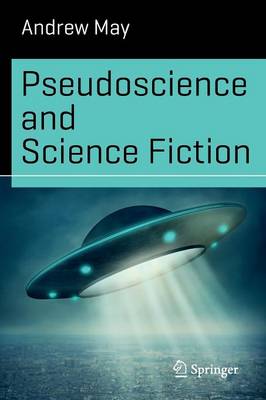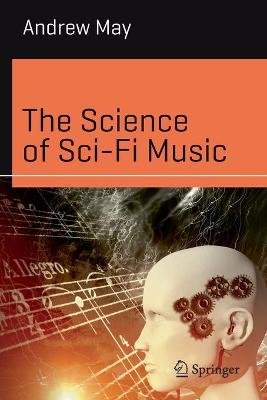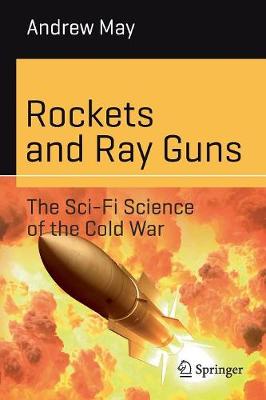Science and Fiction
5 total works
Aliens, flying saucers, ESP, the Bermuda Triangle, antigravity … are we talking about science fiction or pseudoscience? Sometimes it is difficult to tell the difference.
Both pseudoscience and science fiction (SF) are creative endeavours that have little in common with academic science, beyond the superficial trappings of jargon and subject matter. The most obvious difference between the two is that pseudoscience is presented as fact, not fiction. Yet like SF, and unlike real science, pseudoscience is driven by a desire to please an audience – in this case, people who “want to believe”. This has led to significant cross-fertilization between the two disciplines. SF authors often draw on “real” pseudoscientific theories to add verisimilitude to their stories, while on other occasions pseudoscience takes its cue from SF – the symbiotic relationship between ufology and Hollywood being a prime example of this.
This engagingly written, well researched and richly illustrated text explores a wide range of intriguing similarities and differences between pseudoscience and the fictional science found in SF.
Andrew May has a degree in Natural Sciences from Cambridge University and a PhD in astrophysics from Manchester University. After many years in academia and the private sector, he now works as a freelance writer and scientific consultant. He has written pocket biographies of Newton and Einstein, as well as contributing to a number of popular science books. He has a lifelong interest in science fiction, and has had several articles published in Fortean Times magazine
The 20th century saw radical changes in the way serious music is composed and produced, including the advent of electronic instruments and novel compositional methods such as serialism and stochastic music. Unlike previous artistic revolutions, this one took its cues from the world of science.
Creating electronic sounds, in the early days, required a well-equipped laboratory and an understanding of acoustic theory. Composition became increasingly "algorithmic", with many composers embracing the mathematics of set theory. The result was some of the most intellectually challenging music ever written - yet also some of the best known, thanks to its rapid assimilation into sci-fi movies and TV shows, from the electronic scores of Forbidden Planet and Dr Who to the other-worldly sounds of 2001: A Space Odyssey.
This book takes a close look at the science behind "science fiction" music, as well as exploring the way sci-fi imagery found its way into the work of musicians like Sun Ra and David Bowie, and how music influenced the science fiction writings of Philip K. Dick and others.
People are used to seeing “fake physics” in science fiction – concepts like faster-than-light travel, antigravity and time travel to name a few. The fiction label ought to be a giveaway, but some SF writers – especially those with a background in professional science – are so adept at “technobabble” that it can be difficult to work out what is fake and what is real. To confuse matters further, Isaac Asimov’s 1948 piece about the fictitious time-travelling substance thiotimoline was written, not as a short story, but in the form of a spoof research paper.
The boundaries between fact and fiction can also be blurred by physicists themselves - sometimes unintentionally, sometimes with tongue-in-cheek, sometimes to satirize perceived weaknesses in research practices. Examples range from hoaxes aimed at exposing poor editorial standards in academic publications, through “thought experiments” that sound like the plot of a sci-fi movie to April Fools’ jokes. Even the latter may carry a serious message, whether about the sociology of science or poking fun at legitimate but far-out scientific hypotheses.
This entertaining book is a joyous romp exploring the whole spectrum of fake physics – from science to fiction and back again.
The Cold War saw scientists in East and West racing to create amazing new technologies, the like of which the world had never seen. Yet not everyone was taken by surprise. From super-powerful atomic weapons to rockets and space travel, readers of science fiction (SF) had seen it all before.
Sometimes reality lived up to the SF vision, at other times it didn't. The hydrogen bomb was as terrifyingly destructive as anything in fiction, while real-world lasers didn't come close to the promise of the classic SF ray gun. Nevertheless, when the scientific Cold War culminated in the Strategic Defence Initiative of the 1980s, it was so science-fictional in its aspirations that the media dubbed it "Star Wars".
This entertaining account, offering a plethora of little known facts and insights from previously classified military projects, shows how the real-world science of the Cold War followed in the footsteps of SF - and how the two together changed our perception of both science and scientists, and paved the way to the world we live in today.
There is a huge gulf between the real physics of space travel and the way it is commonly portrayed in movies and TV shows. That’s not because space physics is difficult or obscure – most of the details were understood by the end of the 18th century – but because it can often be bafflingly counter-intuitive for a general audience. The purpose of this book isn’t to criticize or debunk popular sci-fi depictions, which can be very entertaining, but to focus on how space physics really works. This is done with the aid of numerous practical illustrations taken from the works of serious science fiction authors – from Jules Verne and Arthur C. Clarke to Larry Niven and Andy Weir – who have taken positive pleasure in getting their scientific facts right.




